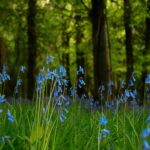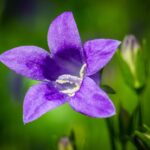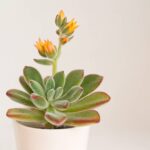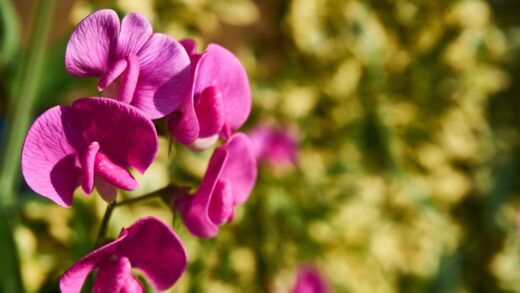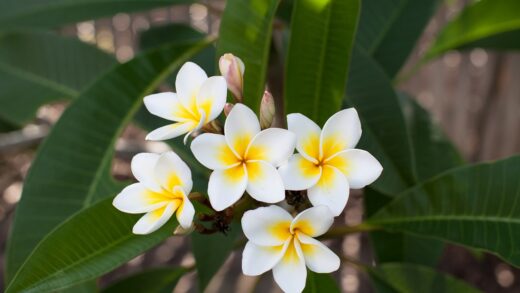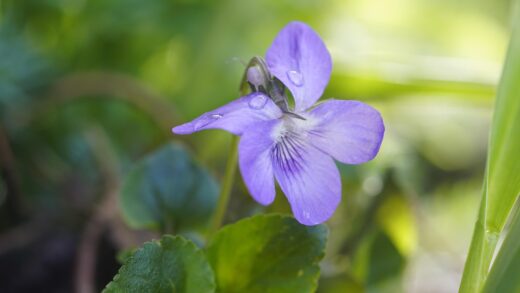The provision of adequate light is a cornerstone of successful cultivation for the amethyst hyacinth, as it directly fuels the process of photosynthesis, which is essential for the plant’s growth, flowering, and long-term survival. This charming bulbous perennial originates from open, sunny habitats such as alpine meadows and rocky slopes, a background that provides clear clues about its preferences in a garden setting. To achieve the most vibrant floral displays and encourage the bulbs to multiply and naturalize, it is crucial to position them where they can receive a generous amount of direct sunlight, particularly during their active growth phase in the spring.
Brimeura amethystina is fundamentally a sun-loving plant. It performs at its absolute best when it is grown in a location that receives full sun for at least six to eight hours per day. This high level of light exposure invigorates the plant, leading to the development of strong, sturdy stems, rich green foliage, and the most prolific and intensely colored blooms. A position in an open, south-facing border, a rock garden, or a gravel bed that is not overshadowed by trees or buildings will provide the ideal conditions for the plant to truly flourish and display its full potential.
The most critical period for the plant to receive ample sunlight is from the moment its leaves emerge in early spring until they naturally begin to yellow and die back after flowering. During these crucial months, the leaves are working as miniature solar panels, capturing light energy and converting it into the chemical energy that is stored in the bulb. This stored energy is what will fuel the following year’s entire growth cycle. If the plant is grown in insufficient light during this period, it will be unable to photosynthesize effectively, leading to a gradual weakening of the bulb and a decline in flowering over successive seasons.
While full sun is the ideal, the amethyst hyacinth can demonstrate a degree of tolerance for slightly less light, particularly in regions with very hot and intense summer sun. In such climates, a position that offers full morning sun followed by some light, dappled shade in the heat of the afternoon can be beneficial. This can help to prevent the foliage from scorching and may prolong the flowering period slightly. However, it is important to distinguish this from deep or heavy shade, which the plant will not tolerate. A location under the high canopy of deciduous trees can often provide this perfect balance, offering full sun in spring before the leaves emerge and then light shade later in the season.
Interpreting the signs of incorrect light exposure
Plants are excellent communicators, and the amethyst hyacinth will provide clear visual cues if it is not receiving the correct amount of light. One of the most common symptoms of insufficient light is etiolation, a condition where the plant’s stems and leaves become elongated, weak, and floppy as they stretch in search of more light. The foliage may also be a paler shade of green than is typical for a healthy, sun-grown specimen. This weak, spindly growth is not only unattractive but is also more susceptible to being damaged by wind and rain.
Weitere Artikel zu diesem Thema
Another clear indicator of inadequate light is a reduction in, or complete lack of, flowering. A bulb that does not receive enough sunlight to replenish its energy stores after its first year of flowering will often produce only leaves in the following season. This is a common complaint among gardeners who have planted bulbs in what appeared to be a sunny spot in the autumn, only to find that it becomes heavily shaded by neighboring plants or emerging tree leaves by the time spring arrives. If your amethyst hyacinths are producing healthy-looking leaves but no flowers, a lack of sufficient sunlight is the most likely culprit.
Conversely, while it is less common for this sun-loving plant, it is possible to provide too much intense, direct sun, particularly in very hot, dry climates. The most likely symptom of this would be scorched or bleached areas on the leaf tips, or a general yellowing of the foliage that occurs prematurely, before the natural post-flowering senescence should begin. The flowers may also fade more quickly than they would in a slightly less exposed position. In such extreme climates, siting the plants where they receive some protection from the most intense afternoon sun can help to mitigate these issues.
Observing your plants throughout their growth cycle and across different times of the day is key to diagnosing light-related issues. Pay attention to how the patterns of sun and shade move across your garden during the spring months. This will help you to identify the optimal locations for planting and to determine if an existing, underperforming clump needs to be moved to a sunnier position. This simple act of observation can provide invaluable insights into the specific light conditions in your garden’s microclimates.
Strategic placement in the garden landscape
To satisfy the light requirements of the amethyst hyacinth, strategic placement within the garden design is essential. Rock gardens are an archetypal location for these plants, as they typically offer a sunny, open aspect and the sharp drainage that they also require. The nooks and crannies between rocks can provide a perfect planting pocket, and the stones themselves absorb and radiate heat, creating a warm microclimate that these bulbs appreciate. Planting them on a sunny, sloping bank is another excellent way to ensure they receive both maximum light exposure and excellent water runoff.
Weitere Artikel zu diesem Thema
In a mixed perennial border, it is important to plant amethyst hyacinths towards the front, where they will not be overshadowed by taller, later-emerging plants. Consider their companions carefully. Planting them amongst low-growing, sun-loving perennials such as thymes, sedums, or certain types of geraniums can create a beautiful and harmonious composition. The emerging foliage of these companions can then help to conceal the dying leaves of the hyacinths as they enter their summer dormancy, providing a seamless transition of interest in the border.
Naturalizing amethyst hyacinths in a lawn is another wonderful way to display them, but this is only successful if the light conditions are right. This technique works best in areas of the lawn that are in full sun and where you are able to delay the first mowing of the season until the bulb foliage has completely died back, typically by early to mid-summer. Mowing the leaves off prematurely while they are still green will starve the bulbs of energy and they will quickly fade away. An open, sunny meadow area or an orchard with widely spaced trees would be an ideal setting for such a planting.
When planning your garden, it is crucial to think about the light conditions not just for a single season, but throughout the year. A spot that is in full sun in early spring might be in deep shade by late spring once deciduous trees have fully leafed out. While this can sometimes work to the amethyst hyacinth’s advantage by providing shade during its dormancy, the timing is critical. You must ensure that the location receives full, direct sun for the entire period from leaf emergence through to the end of flowering to guarantee the health and perennial performance of the bulbs.
Light needs for propagation and seedlings
When propagating amethyst hyacinths, either by division or from seed, the light requirements of the new plants are just as important as for established clumps. When you replant divided bulbs in the autumn, it is imperative to choose a location that will provide them with the full sun they need in the following spring. Placing them in a well-lit position will give them the best possible chance to establish a strong root system and photosynthesize effectively in their first year, which is crucial for their long-term success.
For those undertaking the more patient process of growing from seed, light becomes a critical factor once germination occurs in the spring. The emerging seedlings, which will look like tiny blades of grass, need bright light to grow strong and begin the process of forming their first tiny bulbs. The seed trays or pots should be kept in a location that receives plenty of bright, indirect light, such as a well-lit cold frame or a spot in the garden that gets gentle morning sun.
As the seedlings develop over their first few seasons, they should be gradually acclimated to more direct sunlight. Too much intense sun when they are very young and small can scorch their delicate foliage, but too little light will result in weak, spindly seedlings that struggle to develop properly. The goal is to provide enough light to encourage robust, compact growth without causing undue stress. A position that receives good light for most of the day but is perhaps shaded during the hottest midday period is often ideal for nurturing young seedlings.
Once the seed-grown bulblets have reached a reasonable size after two or three years of growth in their nursery pots, they can be planted out into their final positions in the garden. At this stage, they should be treated like mature bulbs and planted in a location that provides the full sun exposure they need to finally reach flowering size. Providing optimal light conditions at every stage of the propagation process, from seedling to mature plant, is the surest way to achieve success and be rewarded with a healthy, flowering colony.












